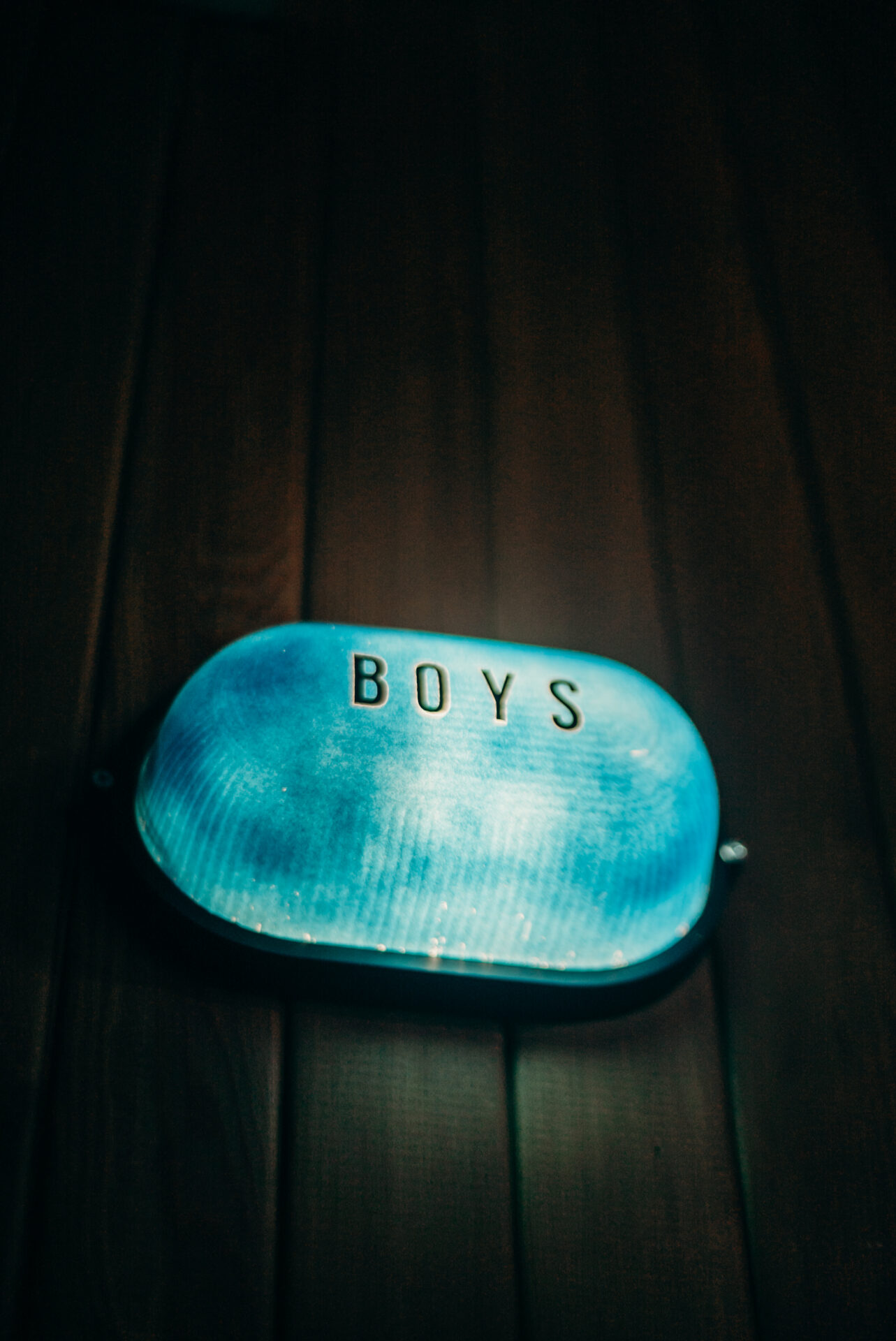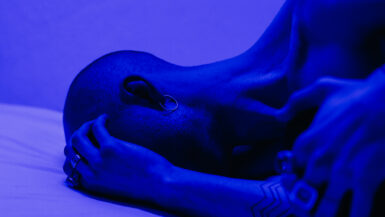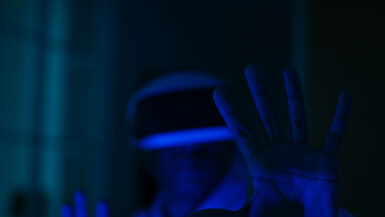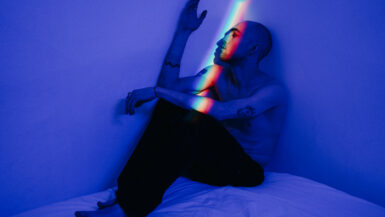In today’s fast-paced and technology-driven world, the impact of blue light on our sleep patterns and productivity has become an essential topic of discussion, particularly for shift workers. The following article delves into the various aspects of blue light exposure and its effects on the sleep quality and overall performance of those working non-traditional hours. By examining scientific studies and providing practical solutions, this comprehensive analysis aims to shed light on the significance of this issue and offer valuable insights for individuals seeking to improve their sleep and productivity in the face of constant blue light exposure.
Improving Sleep Quality and Productivity for Shift Workers
As we delve into the world of shift workers, it is essential to understand the unique challenges they face due to their irregular work schedules. One major concern is the impact of blue light exposure on their sleep quality and productivity. In this section, we will explore effective strategies to mitigate the negative effects of blue light exposure and improve sleep quality and productivity for those working in non-traditional hours.
Understanding the Relationship Between Blue Light and Sleep
Before diving into practical solutions, it is crucial to comprehend the connection between blue light and sleep. Blue light emitted from electronic devices and artificial lighting can interfere with the production of melatonin, a hormone responsible for regulating sleep patterns. This disruption leads to difficulty falling asleep, fragmented sleep, and daytime sleepiness, which can significantly affect productivity levels. To better understand this phenomenon, you can read more about the connection between blue light and sleep in animals.
Adjusting Shift Schedules and Work Environment
One way to minimize the adverse effects of blue light on sleep and productivity is by adjusting shift schedules to align with natural circadian rhythms. Employers can consider implementing forward-rotating schedules, where shifts progress from day to evening to night, allowing workers to adapt to the changes gradually. Additionally, providing well-lit workspaces with natural light during daytime shifts and reducing exposure to blue light during nighttime shifts can help maintain a healthy sleep-wake cycle for shift workers.
Investing in Blue Light Blocking Technology
As electronic devices are a significant source of blue light, investing in blue light blocking technology can be an effective strategy to improve sleep quality and productivity. Blue light blocking glasses, screen protectors, and software applications that filter out blue light can help reduce exposure, especially during night shifts or before bedtime. By limiting blue light exposure, shift workers may experience an improvement in their sleep patterns and overall energy levels.
Establishing a Consistent Sleep Routine
Creating and maintaining a consistent sleep routine is essential for shift workers to ensure they receive adequate rest. This includes setting a regular bedtime and wake-up time, even on days off, to help regulate the body’s internal clock. Additionally, creating a sleep-conducive environment by maintaining a cool, dark, and quiet bedroom can further support healthy sleep habits.
Prioritizing Self-Care and Stress Management
Finally, shift workers should prioritize self-care and stress management to improve their sleep quality and productivity. Incorporating regular exercise, eating a balanced diet, and practicing relaxation techniques, such as meditation or deep breathing exercises, can support overall well-being and enhance sleep patterns.
In summary, the impact of blue light on shift workers’ sleep and productivity is a significant concern that requires attention and understanding. By implementing strategies such as adapting work schedules, investing in blue light blocking technology, and promoting self-care practices, shift workers can effectively address the challenges they face and improve their overall sleep quality and productivity.
How Blue Light Disrupts Sleep Patterns
In this subsection, we will delve into the science behind blue light’s disruptive effects on sleep patterns, particularly for shift workers. By understanding the mechanisms through which blue light interferes with our natural sleep-wake cycle, we can better appreciate the importance of addressing this issue and implementing strategies to counteract its negative consequences.
The Role of Circadian Rhythms in Sleep Regulation
Circadian rhythms are biological processes that follow a roughly 24-hour cycle, regulating various bodily functions, including sleep. The suprachiasmatic nucleus (SCN), a group of cells in the hypothalamus, is the master clock that controls these rhythms. It relies on external cues, primarily light, to synchronize the body’s internal clock with the day-night cycle.
Blue Light’s Impact on Melatonin Production
Melatonin, the “sleep hormone,” plays a crucial role in regulating sleep by signaling to the body that it is time to rest. The production of melatonin is controlled by the SCN and is affected by light exposure. Blue light, with a wavelength of approximately 480 nanometers, is particularly impactful, as it suppresses melatonin production more effectively than other wavelengths of light. Consequently, exposure to blue light in the evening or at night can delay the onset of sleep and disrupt the overall sleep pattern.
Shift Work and the Misalignment of Circadian Rhythms
Shift workers, especially those working night shifts, are more susceptible to the negative effects of blue light exposure due to the misalignment of their circadian rhythms with the external environment. As they are exposed to artificial blue light sources during nighttime hours, their melatonin production is suppressed, making it more challenging to fall asleep and maintain a regular sleep-wake cycle.
Consequences of Disrupted Sleep Patterns
Disrupted sleep patterns due to blue light exposure can lead to various health issues and impact overall productivity. Insufficient sleep is associated with increased risks of obesity, cardiovascular disease, diabetes, and mood disorders. Moreover, it can negatively affect cognitive functions, such as memory, attention, and decision-making, which can significantly impair shift workers’ performance and job satisfaction.
Understanding the mechanisms through which blue light interferes with sleep patterns is crucial for developing effective strategies to mitigate its negative effects. By adjusting work schedules, investing in blue light blocking technology, and promoting good sleep hygiene practices, shift workers can improve their sleep quality, overall well-being, and productivity in the face of constant blue light exposure.
Strategies for Reducing Blue Light Exposure
Shift workers face unique challenges when it comes to maintaining a healthy sleep pattern due to their exposure to blue light during irregular hours. This section will explore various strategies to reduce blue light exposure and mitigate its impact on shift workers’ sleep quality, ultimately enhancing their well-being and job performance.
Understanding the Link Between Blue Light and Sleep in the Military
Military personnel, like other shift workers, are no strangers to the detrimental effects of blue light exposure on sleep. The connection between blue light and sleep in the military has been well-documented, highlighting the need for effective strategies to combat this issue. By examining the experiences of military personnel and the solutions they employ, shift workers can better understand and address their own blue light-related sleep challenges. You can read more about this connection in our article, “The Connection Between Blue Light and Sleep in the Military.”
Creating a Blue Light-Free Bedroom Sanctuary
One effective strategy to reduce blue light exposure is to create a sleep environment free of electronic devices that emit blue light. By removing gadgets such as smartphones, tablets, and televisions from the bedroom or at least turning them off 1-2 hours before bedtime, shift workers can minimize their exposure to blue light and allow their bodies to prepare for sleep naturally.
Embracing Natural Light During Daytime Hours
Exposure to natural sunlight during daytime hours can help regulate the body’s internal clock and improve overall sleep quality. Whenever possible, shift workers should spend time outdoors or near windows during daylight hours. This exposure to natural light can help maintain a healthy circadian rhythm and counterbalance the effects of blue light exposure during nighttime shifts.
Implementing Blue Light-Reducing Apps and Tools
Various apps and tools have been developed to help individuals reduce their blue light exposure from electronic devices. Installing blue light filtering software on smartphones, tablets, and computer screens can help shift workers minimize their exposure without sacrificing the use of these devices. Additionally, blue light-blocking glasses can be worn to shield the eyes from artificial blue light sources during nighttime shifts.
Advocating for Blue Light-Reducing Work Policies
Shift workers can also advocate for workplace policies that address the issue of blue light exposure. Employers can implement measures such as providing blue light-blocking screen protectors for company devices, using alternative lighting options during nighttime shifts, and offering educational resources on the importance of sleep hygiene and blue light management.
By employing these strategies to reduce blue light exposure, shift workers can effectively minimize the negative impact on their sleep patterns and overall well-being. This, in turn, can lead to improved job performance, increased productivity, and enhanced quality of life for those working non-traditional hours.
Effects of Blue Light Exposure on Shift Workers
Shift workers are particularly vulnerable to the negative effects of blue light exposure due to the nature of their work schedules. In this subsection, we will explore the various ways in which blue light impacts shift workers’ sleep and overall well-being, as well as the potential long-term consequences of these effects on their health and productivity.
Disruption of Circadian Rhythms and Sleep Quality
One of the most significant impacts of blue light exposure on shift workers is the disruption of their circadian rhythms, leading to poor sleep quality. As their work schedules often require them to be awake during nighttime hours, they are exposed to artificial blue light sources that can suppress melatonin production and delay the onset of sleep. This can result in difficulty falling asleep, frequent awakenings, and reduced total sleep time, all of which can negatively affect their overall well-being and job performance.
Increased Risk of Sleep Disorders
Prolonged exposure to blue light can also increase the risk of developing sleep disorders among shift workers. Conditions such as insomnia, sleep apnea, and restless legs syndrome are more prevalent in individuals with disrupted sleep patterns, which can further exacerbate the challenges faced by those working non-traditional hours. These sleep disorders can lead to chronic sleep deprivation, significantly impacting cognitive functions and overall health.
Reduced Cognitive Function and Job Performance
The negative effects of blue light exposure on sleep quality can also translate to reduced cognitive function for shift workers. Impaired memory, attention, and decision-making abilities are common consequences of inadequate sleep, which can severely impact job performance and increase the risk of workplace accidents. As cognitive function is essential for productivity, managing blue light exposure and promoting healthy sleep habits are crucial for shift workers’ success.
Long-Term Health Consequences
Finally, the long-lasting effects of blue light exposure on shift workers’ sleep and overall health cannot be overlooked. Chronic sleep deprivation and disrupted circadian rhythms have been linked to increased risks of obesity, cardiovascular disease, diabetes, and mood disorders such as depression and anxiety. These long-term health consequences not only affect the quality of life for shift workers but also have implications for their productivity and job satisfaction.
Understanding the various effects of blue light exposure on shift workers’ sleep and well-being is essential for both individuals and employers. By acknowledging these challenges and implementing strategies to mitigate the negative consequences, shift workers can improve their sleep quality, enhance their overall health, and maintain their productivity in the face of constant blue light exposure.
Understanding Blue Light and Its Sources
In order to fully comprehend the impact of blue light on shift workers’ sleep, it is crucial to understand what blue light is and the various sources from which we are exposed to it. By identifying these sources, we can better manage our exposure and mitigate the negative effects on sleep and overall well-being.
Defining Blue Light and Its Role in Our Lives
Blue light is a part of the visible light spectrum, with a wavelength of approximately 380 to 500 nanometers. It is essential for our well-being, as it helps regulate our body’s internal clock, known as the circadian rhythm. Blue light exposure during the day boosts alertness, enhances cognitive function, and improves mood. However, excessive exposure in the evening or at night can disrupt our natural sleep-wake cycle, leading to sleep disturbances and other health issues.
Natural Sources of Blue Light: The Sun’s Role
The primary source of blue light is the sun, which emits a full spectrum of light, including blue wavelengths. Exposure to natural sunlight during the day helps synchronize our internal clock with the external environment and promotes healthy sleep patterns. However, for shift workers who are often awake during nighttime hours, this natural exposure may be limited, making them more susceptible to the effects of artificial blue light sources.
Artificial Sources of Blue Light: Electronic Devices and Lighting
In today’s technology-driven world, we are constantly exposed to artificial sources of blue light, primarily from electronic devices such as smartphones, tablets, computers, and television screens. LED and fluorescent lighting also emit blue light, contributing to our overall exposure. Shift workers are particularly vulnerable to the negative effects of artificial blue light, as their work schedules often require them to be exposed to these sources during nighttime hours when melatonin production should be at its peak.
Assessing Personal Blue Light Exposure and Identifying Areas for Improvement
Recognizing the various sources of blue light in our daily lives is a crucial first step in managing its impact on our sleep and overall health. Shift workers can assess their personal blue light exposure by considering the time spent using electronic devices, the type of lighting in their work and home environments, and the amount of natural sunlight exposure they receive during the day. With this information, individuals can identify areas where they can reduce their exposure and implement strategies to minimize the negative effects of blue light on their sleep and well-being.
By understanding the nature of blue light and its various sources, shift workers can take proactive measures to protect their sleep and maintain their productivity. Managing blue light exposure, along with implementing other sleep hygiene practices, can significantly improve the overall quality of life for those working non-traditional hours.





Leave a reply